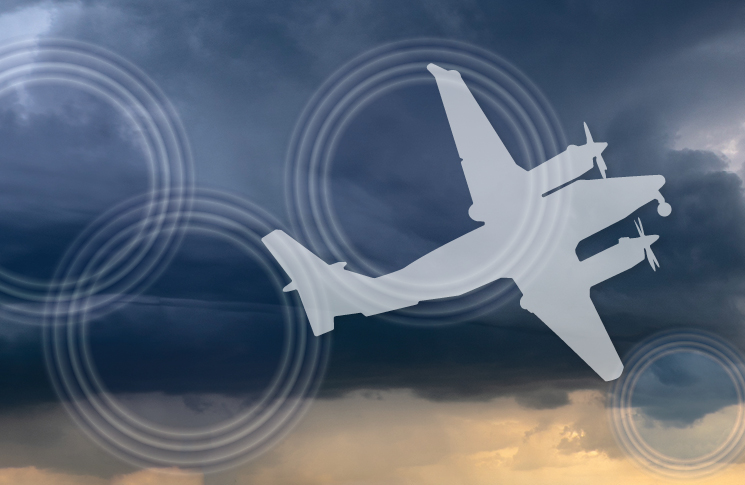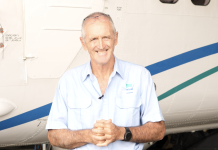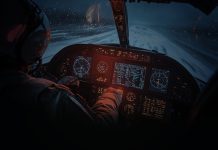The Good old bad old days
Stuart Jones looks back on procedures of times past.
I don’t know whether aviation was better in the mid to late 20th century. I do know I was younger then, and that colours my judgement.
I got my private licence in 1967, and my commercial licence in ‘71. By the end of 1972 I had a flying instructor rating and I did an instrument rating in ‘74 and that got me into IFR instructing as well and general charter flying. By the time I finished flying for a living in 2000, I had about 12,500 hours.
I won’t weigh in about the ‘glorious’ past versus the ‘miserable’ present but one thing that is better – fewer circling approaches. I must have done dozens of circling approaches in training plus many for real and I don’t miss them one bit.
ICAO defines a circling approach as ‘an extension of an instrument approach procedure which provides for visual circling of the airport prior to landing’. In other words, it’s when you finish an IFR flight relying solely on instruments, and you go to minimum visual conditions where you have to look outside to position the aircraft to land.
In low or minimum visibility, often in turbulent crosswind conditions, and especially at night, circling approaches are particularly demanding. You are trying to stay visual with whisps of clouds around you and trying to keep the runway in sight. But this was how we did approaches to aerodromes without installed glideslopes in the days before satellite navigation.
The accident with Monarch airlines at Young in 1993 was a classic example of a circling approach accident.
The risks include the big one: hitting the ground, either by inadvertently going below the circling minima, inadvertently going outside the circling area or by losing control in flight due to spatial disorientation or somatogravic illusions – this last one a particular risk in a low-visibility go‑around.
The US Flight Safety Foundation found circling approaches were 25 times more dangerous than straight-in RNAV approaches. As recently as 2010, there were large transport aircraft being destroyed with no survivors in circling approach accidents. (A321, Islamabad Pakistan, 28 July 2010, 152 killed; A310, Comoros, 30 June 2009, 152 killed.)
The accident with Monarch airlines at Young in 1993 was a classic example of a circling approach accident. That accident is unlikely to happen today, despite all the other organisational and maintenance flaws, if the aircraft had been able to make an RNP approach aligned with the runway. As it was, the crew made 3 attempts to land from a circling approach and, in a situation of high workload, low cloud, rain and darkness, the aircraft lost altitude and clipped a tree on the top of a hill.
I was flying with the NSW Air Ambulance and training another pilot at the time. We were sent to pick up the only survivor. We arrived several hours after the accident and, on the initial approach, we became visual over the aerodrome.
Very quickly it became apparent that we couldn’t circle because we could not keep the runway in sight so we flew the missed approach and flew back to the NDB. On the second approach, we arrived at the minima at about the downwind position and were able manoeuvre and land.
The thing about circling approaches is how each one is different. The variables include runway layout, final approach track and obstacles in the airport vicinity. Weather conditions add another layer of variation. In high-wind conditions, you have to be thinking ahead of the aircraft and remember, if you’re turning downwind, you will have a greater turning circle because of a higher groundspeed. It is easy to leave the circling area and, if you do leave, you are in uncharted territory with obstacles near you that you might not be aware of and unable see.
The old circling approach was a high workload approach. At the time it was an accepted procedure and there was no alternative, but it’s certainly a higher risk manoeuvre than a straight-in approach.
I believe there will be a day when the circling approach criteria will go into history.
In the Air Ambulance, the circling approach was regularly flown. I always trained that if you couldn’t see adequately at the minimum, it wasn’t a place to be. You must not push on.
The nature of air ambulance flights subtlety puts urgency that you must land. This can never be – the response can never become an accident.
I remember a patient transfer from Lightning Ridge at night, in western NSW and, although you could see the strip from overhead, the slant visibility with haze and dust prevented you from seeing the runway when turning base. We tried twice then flew back to Walgett and the patient was transferred there by road. The point is, if you look up Lightning Ridge in the AIP, it now has an RNP approach that allows a runway-aligned approach.
I believe there will be a day when the circling approach criteria will go into history and it won’t be done any more. In some countries that is already the case. Global navigation satellite systems (GNSS) are so available and so reliable, why would you do it any other way? When you look up at the minimum, the runway is waiting for you. I was always gladdened by that sight.
Stuart Jones is a senior aviation technical writer at CASA.






Comments are closed.